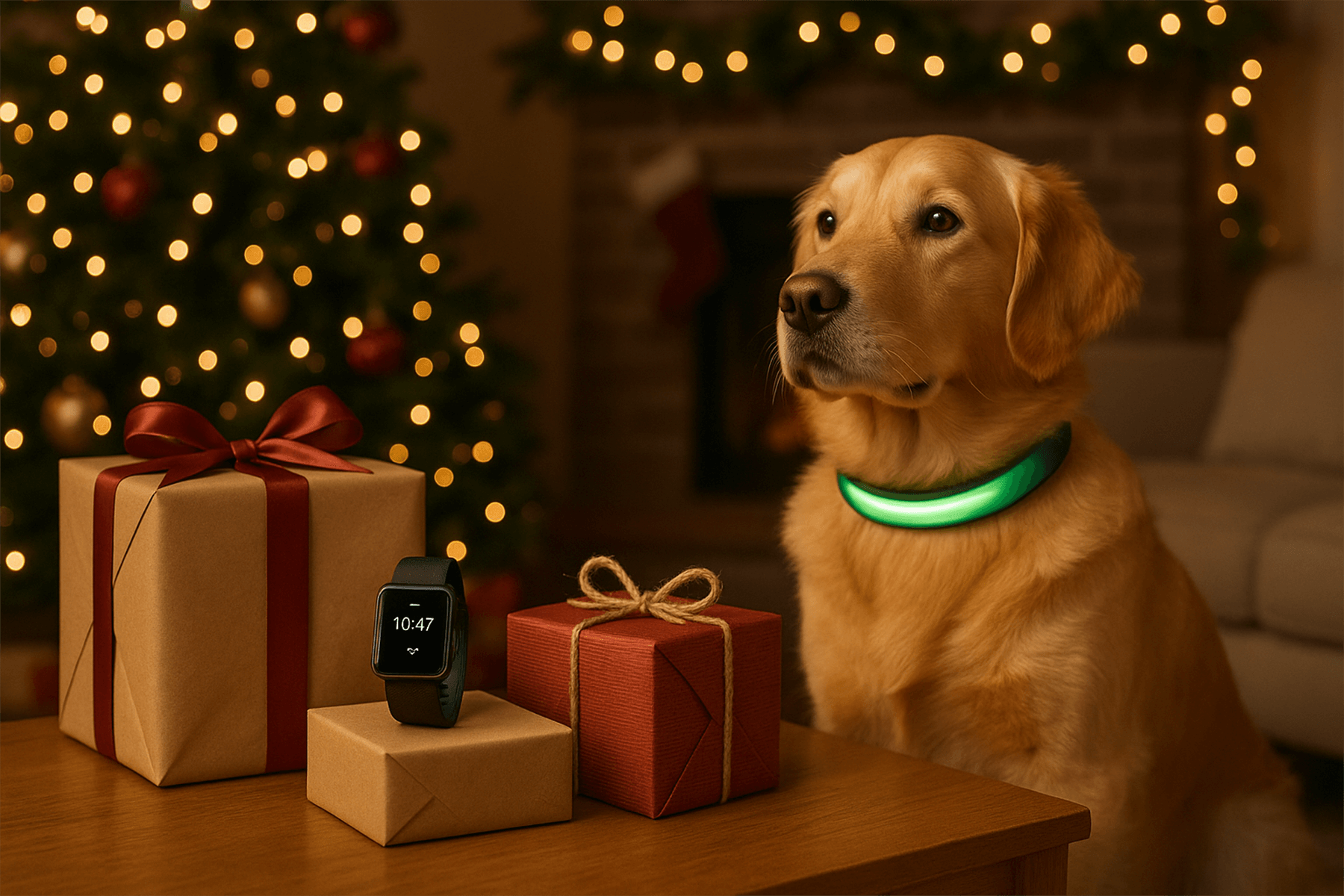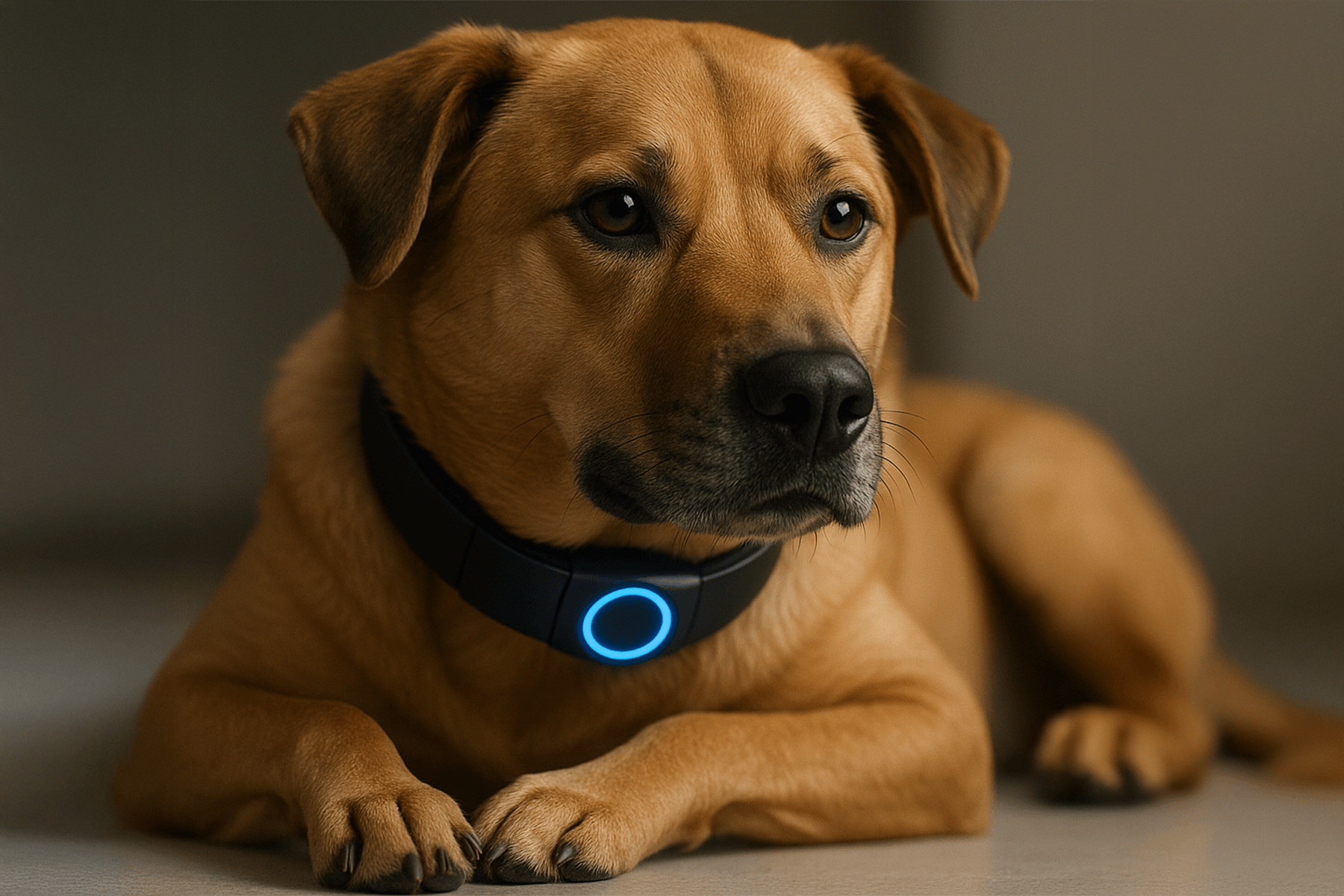Artificial intelligence is transforming how both humans and animals manage health and longevity. The same analytics that power human wearables and precision-medicine platforms are now guiding better care for pets. By translating motion, sleep, and behavioral data into early-warning signals, AI pet health monitoring could give owners the same proactive insight longevity researchers promise for people.
The Data Link Between Species
Across health science, the focus has shifted from treating illness to extending healthy years. For humans, this means personalized wearables, continuous glucose sensors, and biological-age tracking. For animals, it increasingly means smart collars and connected bowls that interpret subtle daily changes. Both rely on animal health analytics AI that compares long-term patterns against individual baselines to detect anomalies.
In veterinary research, these AI systems analyze millions of movement samples and biometric readings to understand early indicators of stress, joint pain, or cardiac decline. Much like human longevity models that forecast frailty or metabolic shifts, these tools aim to identify problems long before symptoms appear.
What Modern AI Tools for Pets Can Reveal
Devices like FitBark now pair motion sensors with machine learning to show how pets recover after exertion, respond to medication, or adjust to aging. Newer systems analyze vocalizations, posture, and sleep cycles to quantify wellbeing. Some startups—like those profiled by Forbes—use AI veterinary insights to flag early pain or anxiety behaviors from video feeds.
The goal isn’t to replace veterinarians but to extend their reach between visits. A collar that notices restless sleep or declining playtime may prompt an owner to schedule an exam sooner. For senior dogs or cats, that early attention can add comfort and potentially extend lifespan — echoing the longevity-care loop humans now pursue with connected health data.
How Pet AI Mirrors Human Longevity Science
The parallels are striking. Human platforms like InsideTracker or WHOOP use biomarkers and heart-rate variability to refine recovery and predict future resilience. Pet platforms mirror this by interpreting activity recovery curves and rest patterns. Both depend on continuous monitoring, cloud-based models, and adaptive baselines.
In both species, AI thrives on longitudinal data — the longer a pet or person wears a tracker, the smarter the insights become. This concept of “dynamic baselining” is key to modern longevity research: systems learn what “normal” looks like for an individual and notice even a 5% deviation that might hint at inflammation, sleep disruption, or early disease.
Key Takeaways
- AI pet health monitoring now parallels human longevity tech by emphasizing prevention and early detection.
- Continuous data collection creates individualized baselines for pets and people alike.
- Owners gain actionable insights that support earlier intervention and healthier aging for their animals.
What This Means for You
For pet owners, AI health tools offer a window into how longevity science works in real time. By tracking subtle behavioral and recovery changes, these devices help bridge the communication gap between home observation and veterinary expertise. The result is more informed care, longer active years, and a deeper connection between species sharing the same data-driven path to wellness.
FAQ
Can AI really predict health issues in pets?
Not with clinical certainty, but AI models can flag early deviations in activity, rest, or behavior that often precede health problems. They provide actionable insights, not diagnoses.
How does pet AI compare to human wearables?
Both collect longitudinal data to spot trends over time. Pet trackers focus on movement and rest; human wearables add biomarkers, but the predictive principles are similar.



